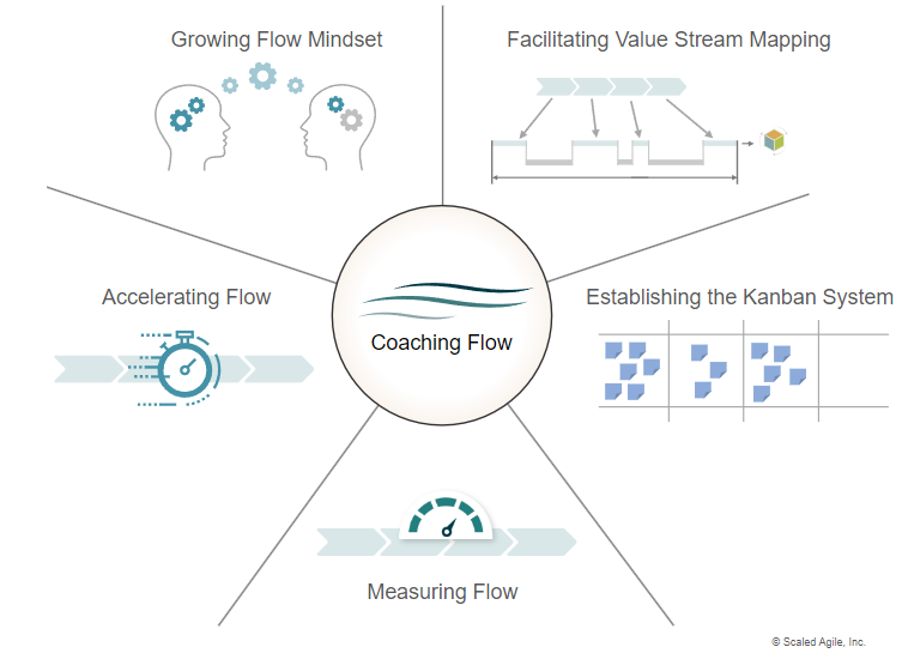Delivering a continuous flow of value to the customer is one of the defining characteristics of an effective SAFe enterprise. However, flow is not easy to achieve, and many impediments occur along the way. Success requires a knowledge of what flow is and how to achieve it. In turn, this requires people knowledgeable in flow who can coach individuals, teams, and trains—and even LPM—to achieve a higher flow of value.
This responsibility can be fulfilled by any number of different SAFe roles, including SPCs, Scrum Masters/Team Coaches, RTEs, STEs, and any savvy leaders or practitioners who seek to optimize the flow of value in their part of the organization.
We are delighted to announce a brand-new Extended Guidance article, Coaching Flow, to support this goal. This article introduces the key responsibilities, activities, and expectations for anyone coaching a flow-based system.
The figure below describes a five-step process for implementing a flow-based system that can be applied at every level of the SAFe Enterprise.

- Value Stream Mapping: Value stream mapping visualizes the flow and creates a shared mental model of what is required to deliver value. It lays the foundation for improving flow.
- Establishing the Kanban System: Kanban systems occur at every SAFe level. They are used to visualize work, streamline the flow of value, build a basis for measurement, and create a connected system to align strategy and execution across the organization.
- Measuring Flow: SAFe provides six flow metrics to measure how efficient an organization is at delivering value in each value stream.
- Accelerating Flow: SAFe defines eight flow accelerators, each designed to improve one of the eight properties of a flow-based system.
- Growing a Flow Mindset: Flow is a mindset. It requires new ways of thinking. Coaching is critical in making it happen.
Coaching flow is a specialized skill that requires applying Lean-Agile and flow-based practices throughout the organization. Those who understand the 5-steps of implementing a flow-based system will be the leaders who can coach their teams, ARTs, Solution Trains, and portfolios to optimize their value streams and deliver more value to their customers.
Stay SAFe!
Andrew Sales, Chief Methodologist, and the Framework Team